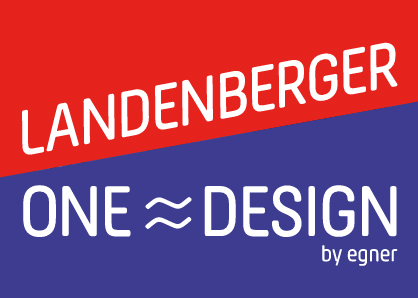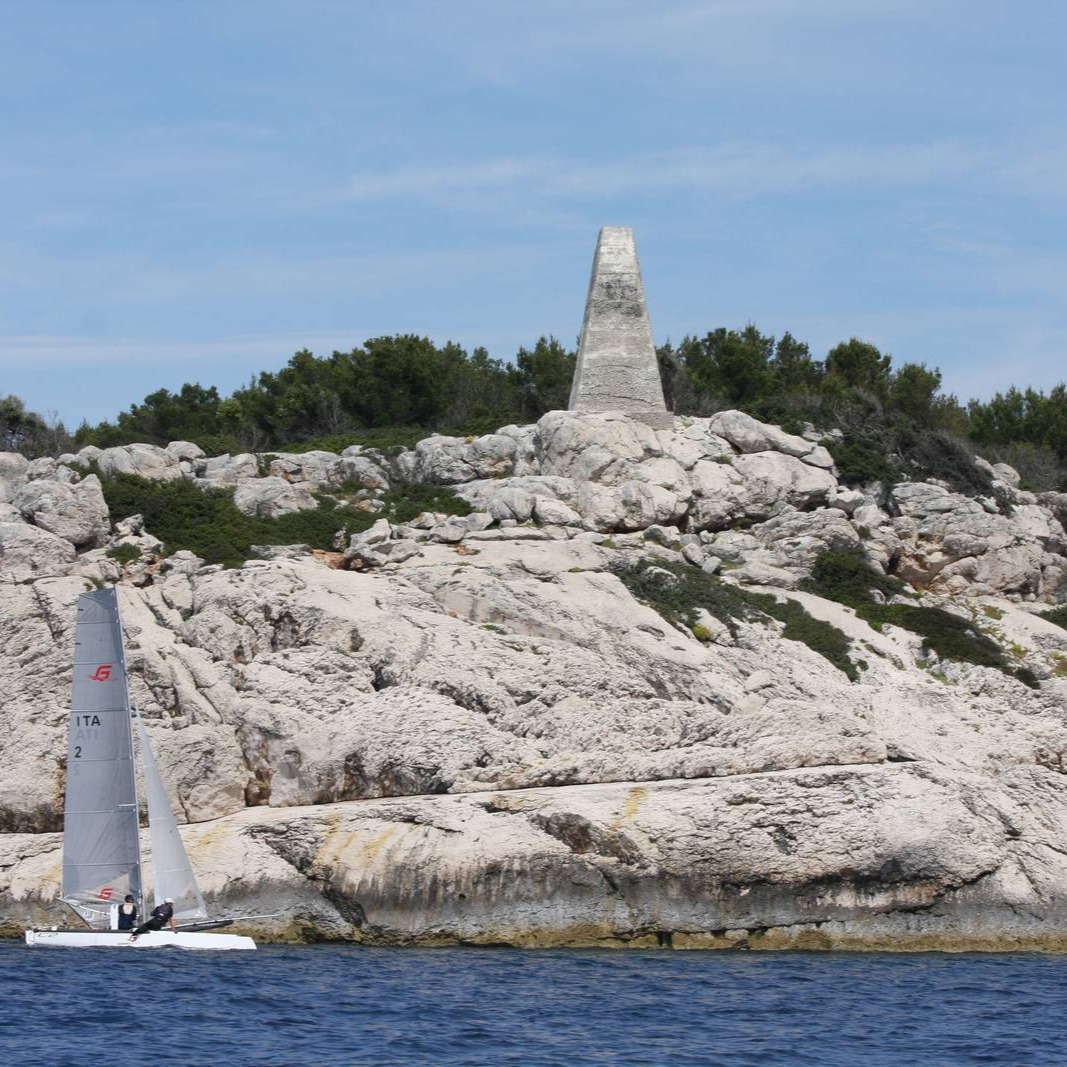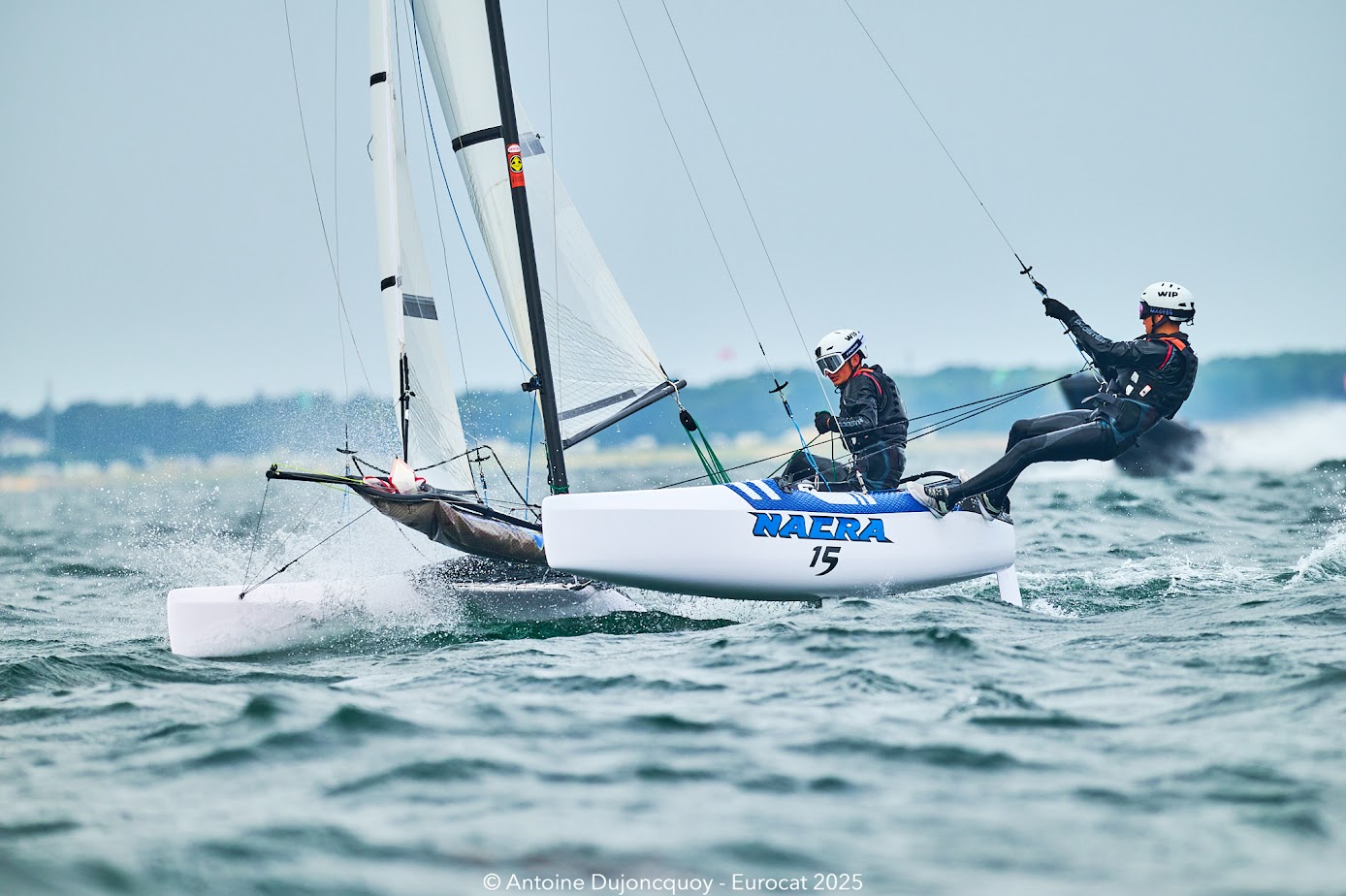AC45 by Mike Drummond, Oracle Racing Design Director
All Photos: Gilles Martin Raget – www.americascup.com – Mike Drummond is in charge of the Oracle Racing Design team, he has been involved with the AC for more than 20 years, and has worked for three winning teams: New Zealand, Alinghi and BOR ( now Oracle). Last week I wrote that the AC45 was a MM design, and he sent a mail to remark that the AC45 is an in-house design by Oracle Racing. As the Design Team Director Mike has also been involved in the BOR90-USA17 design process, so I took advantage of his contact and fired back some questions. Check Mike’s impressive CV at www.oracleracing.com/team
– Mike Drummond is in charge of the Oracle Racing Design team, he has been involved with the AC for more than 20 years, and has worked for three winning teams: New Zealand, Alinghi and BOR ( now Oracle). Last week I wrote that the AC45 was a MM design, and he sent a mail to remark that the AC45 is an in-house design by Oracle Racing. As the Design Team Director Mike has also been involved in the BOR90-USA17 design process, so I took advantage of his contact and fired back some questions. Check Mike’s impressive CV at www.oracleracing.com/team
———
-CSN:How was the transition from being involved in designing succesful monohulls for the past ACs to make arguably the biggest jump ever, going for a 90×90 multihull?
[Mike Drummond] The principles of design are similar for any yacht, but my biggest problem was a lack of practical experience with large multihulls. I listened carefully to people like VPLP, Michel Kermarec, Hervé Devaux and Franck Cammas.
Michel Kermarec was with Oracle Racing in 2003 Cup designing appendages and performance prediction. He is a very experienced sailor (ORMA 60s, Olympics, 470s, Admirals Cup..) and designer. He played a huge part in the performance of 17.
I had two pieces of luck on my side – I started racing A-class in 2003 and had learnt intuitively about the subtleties of multis compared with leaners, although it hadn’t translated into much design work. The other was I visited the 2004 C-Class regatta in Newport and had talked with Steve Clark and Duncan Maclane, with ideas of competing one day.
I was open to the light air performance and load benefits and was confident about designing and building a wing with the people we had, and it wouldn’t take much sailing to get up to speed.
 -CSN: Oracle design team was the main responsible of the new modified USA17 platform?
-CSN: Oracle design team was the main responsible of the new modified USA17 platform?
You went from a traditional cruise-racing Tri to an hybrid Cat-Tri combo, eliminating central dagger/rudder. Reducing amas volume (and Wing aside) was a drastic concept change from the original VPLP version, in fact some are calling USA17 a Cat, All these changes were forced by A5? or it was one of the options the team had in mind?
-[MD]: Early on we figured that Alinghi’s best chance was to find a light air venue and use a narrow cat. This also fitted with their background and the Lake of Geneva multihull culture. The original USA-17 shapes were developed for unknown conditions, so it was an all-round performer and could have raced in 25kn+ and 3m seas. It was obvious that we had to develop or lose.
We had a very good collaboration with VPLP all the way along as well as clever designers in-house. Not having multihull design experience didn’t slow down the hull shape development because the same principles as monos were applied to guide the research, so between VPLP and Manolo we had a pretty good drag decrease with the new amas.
As far as the improvements to 17 go many of our ideas had been tried unsuccessfully in the past – such as no appendages in the centre hull. It took a while to get the confidence that our designs would work. I think a major difference was that we powered the boat up significantly so that the centre hull was flying in 6kn of wind or less. So because we were sailing on one hull all the time the new ama shape was improved; no centre rudder was OK etc. Because we were confident of losing unless the boat was improved, it was easier to call for changes even though we weren’t sure they would work.

Photos: Gilles Martin Raget – www.americascup.com
AC45
-CSN: Tracking back the latest multi design from the your team, the mentioned extreme changes on USA17, you could gather huge amount of data being collected by the several monitoring systems the boat had. This valuable data was applied for designing the AC45?
[MD] The crossover of technology was more in using the experience of boat behaviour, structural safety factors, rudder size, wing size and mechanics. And a big point is with the experience of handling 17 we knew the logistics of handling and building wings would be solvable.
-CSN: My guess is also that some A5 feaures/solutions were used too?
[MD] The structure is similar to A5, which in turn was similar to an older 41’ Alinghi cat.
-CSN: Which was the main design goal for the 45?
Full scale testing ground for the AC72 or a ‘safer’ extreme machine for sailors to gather confidence on wings/cats?
[MD] The AC45 was designed for good performance in 7kn, raced in 24, and manage (survive!) in 30kn. We knew it would have a wing, which put an emphasis on being OK in strong wind because the consequences of capsize with a wing is messy. Hence the hulls look bow-up in light airs, but crew weight can be moved forward, and the manoeuvring is very good.
I think once there is some experience in the fleet the racing will be very very good, and the crews will push the boats hard.
 Photos: Gilles Martin Raget – www.americascup.com
Photos: Gilles Martin Raget – www.americascup.com
-CSN: Now Oracle is providing the 45 and is offering the other teams a complete solution and design testing ground, you are sharing most of the knowledge and experience the team has achieved- Aren´t you ‘afraid’ of being outgamed in the final design by others?
[MD] To get this event up and running we had to do the AC45 to get regattas underway so there was no choice. In terms of design the 72’ will be much more sophisticated, so if we lose it won’t be because of the AC45 technology.
-CSN:The Ac45 hulls seems to be much more balanced than the giant A5 , the videos shows real smooth sailing and recoveries on choppy seas, now the team is pushing the limits and we are seeing some pitchs ‘a la’ X40s with the boat going vertical. Is possible that the AC72s will need (compared to the AC45) more overall volume to balance the huge power of the Wings?
[MD] I don’t know yet! The average boatspeeds will be quite high because the boat is overpowered most of the time, so there is less penalty in a higher volume hull than for cats from 10 years ago.
The experience with USA-17 led us closer to her hull shape than A5.
-CSN: In SF is possible to have the open swells seen in Valencia? or mainly short chop ?[MD] I have only sailed in SF twice and there was a short chop in the harbour, but the course area published recently shows the possibility of racing outside the Gate where there must be swell.
-CSN: Which is the speed, by design, the AC45 is capable to achieve? The guys already peaked 29 knots right?
[MD] Upwind speeds top at about 14kn, tacking through 90deg. Downwind will be 25kn or more in TWS 20. Because the wing is not reef-able top speed might be limited to mid-30s, but as sailing techniques develop, who knows?
-CSN: Can you name the design team involved on the AC45 project?
[MD] We started with exploring a converted X40, but really needed a more robust yacht for the Wing sailing. The conceptual decision took feedback from virtually all the sailing and design teams, and there are more involved with all the detail designs. Key designers are,
Michel Kermarec – appendages, general design
Manolo Ruiz de Elvira – hull
Dirk Kramers – general design, structures
Joseph Ozanne/Mario Caponnetto – wing aero
Scott Ferguson – wing structure
Mike Drummond – general design input

-CSN: The AC45 is the latest expression on cats hulls refinements, that are converging on a similar shape on racing beachcats and now on the bigger AC cats, Wings are providing sail power efficiency, so which is the next step (if any) in multihull design in your opinion?
[MD] Multihulls are very efficient in light – moderate winds, but at high speeds they are limited by their long thin hulls. Hydrofoils or planing hulls are directions to try, but at present they have tradeoffs in righting moment or low speed drag.
I’m sure there will be incremental improvements as a greater number of designers and sailors get into cats, because of general design evolution. Any time a new material arrives that is lighter, there will be a step improvement in performance through hydrofoils or thinner appendages too.
———-
Catsailingnews.blogspot.com































Really terrific interview. I have Mike Drummond designed boards on my a-cat, and it is great to hear from him and learn about the AC45.
I sailed for many years in San Francisco and can tell you that the waves in the bay get very significant during an ebb tide where the bay water flows at up to 6 knots against heavy breeze in deep water. September is at the end of the dry season there, so the ebb tide should be somewhat reduced and the waves more moderate.
Not very far outside the Golden Gate bridge I have sailed in waves that are 10 feet plus during a big ebb, but they normally aren't breaking.